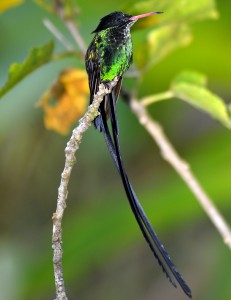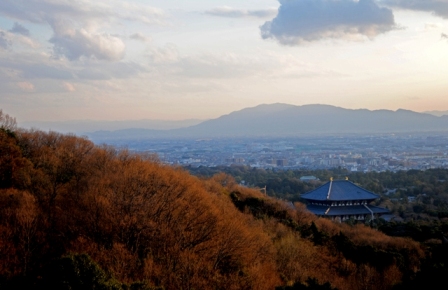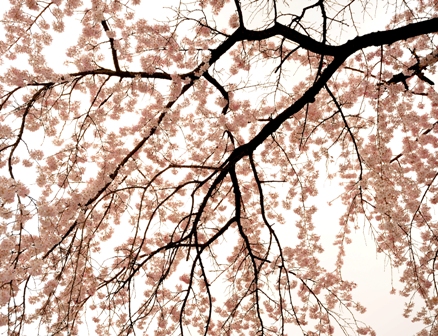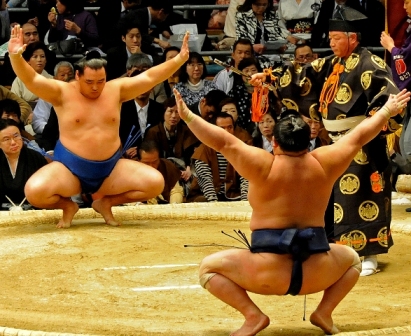
Category Archives: Nature
The Caribbean Birding Trail

Fermata is writing interpretive plans for the first two countries on the Trail, Jamaica and the Dominican Republic. Ted Eubanks, along with Lisa Sorenson and Holly Robertson of the SCSCB, spent nearly a month in the two countries this summer. Our visits focused on five Key Biodiversity Areas (KBAs) in these two countries: Sierra Bahoruco Oriental, Sierra Bahoruco, and Parque Nactional Valle Nuevo in the DR, and the Cockpit and Portland Bight regions of Jamaica. In October the team will travel to Grenada to complete this summer’s field work.
Austin – Spring Sneaked (or snuck) In

While in Japan spring sneaked (or snuck, depending on your origins. In East Texas, use snuck) in through the back door. There were several spring wildflowers blooming along my trail this Easter Sunday in Austin. Although normally suffocated by the various exotic weeds that dominate any space given them, there are still a few lovely spots in the city where the colors endemic to this area may be appreciated.
My favorite wildflower is wine cup. I know; as a Texan I should vote for bluebonnet. But bluebonnets and paintbrushes are ubiquitous and collectively gaudy. The wine cup is subtle, rarely collecting in sizable aggregations. The color of the flower morphs with age, from a dark Cabernet to a light Zinfandel before it fades.
I have placed a folder (creatively named “Flowers”) in My Gallery. These are all IPhotos from this morning in Austin.
Ted
Easter Sunday, 4 April, 2010
Kyoto, Nara, and Osaka – Thank the Gods, The War is Over!

Although I have traveled extensively in Japan, I do not profess to have deep insight into the culture or the people. As a westerner (and a Texan, for God’s sake), Asia is blithely enigmatic.
There are certainly cultures in the world that strive to remain apart. The Japanese, for all of their western trappings, do not have to work hard to remain distinguishable. The radical differences in language are, in part, responsible. Although English is commonly seen in Japan, most of it is related to the perplexing English tag lines, slogans, and non sequiturs that Japanese marketing whizzes concoct. Otherwise, Japan is for the Japanese.
Of course we feel welcome. But with a Japanese family we are at a decided advantage. Otherwise Japan is a test for someone who does not speak the language or have entre to the culture.
For example, we are staying in a roykan near our granddaughter’s apartment in Ueno. We walked downstairs for breakfast this morning, and I spent several minutes at the front desk trying to explain that the one-size-fits-all slippers do not fit a size-14 foot from Texas. No matter, the rules are the rules, and they insisted that I shoe-horn a size 6 on before being fed. I ate my breakfast wearing slippers that barely fit my big toes.
The train system in Japan is a marvel, but it does take some time to master scheduling, ticketing, and such. This trip we purchased (as usual) JR rail passes for our time here in country. We also bought the green car pass for a premium, which allows you to reserve a seat in the first-class “green” cars. To our dismay, we learned (and I do not remember this from past trips) that only certain trains are available to rail pass holders. The Nozomi line, for example, is restricted (even though there were many occasions when the line would have worked best for us). We were told that since the JR rail pass represents a significant discount (of course, depending on how many times you use it during your stay), JR is justified in limiting where and when you can travel.
My impression is that while the Japanese love to travel the world, they would be just as happy if the world did not travel to Japan. The domestic travel market here is enormous, and, to be blunt, they do not need international leisure travelers to keep their hotels full. In this entire 2 ½ week trip, traveling from Okinawa to Nagasaki, Hiroshima, Kyoto, Nara, Osaka, and Tokyo in peak travel season (cherry blossom time), we have not seen more than 50 foreign travelers.
The two places where we did see a few foreigners were Kyoto and Nara. Anyone with an interest in Japanese history and culture knows about these two adjacent cities, with their extensive museums, shrines, art, and cuisine. The two are among the most recognized Japanese cultural centers. Virginia and I had visited Kyoto first many years ago, yet this would be our first trip to Nara. Cassady, who is beginning her third year as an art history major at Tokyo University (Todai), took particular interest in these two cultural icons. Of course, it did not hurt that Kyoto is among the shopping meccas in Japan as well.
In contrast, I would rather be tortured than to shop. One of the reasons I love the internet is that it allows me to avoid entering stores. Thank you, UPS, just place my package by the front door.
While Virginia and Cassady spent their first day in Kyoto scouring the shops, I spent my first day lounging around our wonderful roykan, Mume. There is an exceedingly funny phrase that my granddaughter uses to describe my method of travel. In Japan a person like me is a “mypasu” guy, one who operates at their own pace. I now remind Cassady and Virginia several times a day that I am a “mypasu” fellow, and to please not ask me to join them shopping ever again. We can always meet for dinner.
Let me share a few more Japanese phrases that I learned from Cassady. The Japanese are exceedingly sharp students of and commenters on their fellow citizens. I suspect in part this comes from living in such close quarters. For example, the Takahashis have been the neighbors of Cassady’s grandparents for nearly 50 years in Utsunomiya. You get to know people fairly well in that time.
We spent our one evening in Utsunomiya with family around the kotatsu gathering a collection of phrases. For example, I learned that a man under his wife’s control is called “shiri ni shikareru,” a man who is a woman’s cushion (in the US, hen-pecked). A couple consisting of a large woman and a small man is called a “nomi no fufu,” a flea couple. A person who follows around someone who is popular (such as at school) is “kingyo no fun,” dung following the goldfish. Funny people, these Japanese.
At times the humor is at your own expense. During dinner one evening I noticed that I had forgotten to zip my fly (this is what happens when one turns 60). Cassady quipped “shakai no mado ga aiteru,” that my window to society is open. Chuckle, chuckle.

When we first arrived in Kyoto the cherry blossoms were beginning to swell. Two days later, after a couple of toasty afternoons, the cherries burst into bloom. I spent our last morning in the Gion district near our roykan photographing the sakura, as well as the maiko in their traditional costumes.
What we had not counted on were the hordes of Japanese enjoying the warm spring break weather in Kyoto as well. Therefore I looked forward to a more unobtrusive respite in the roykan in Nara, although the accommodations at Mume could not have been nicer. There we would be staying outside of the city in a roykan, Mikasa, adjacent to the Nara Keon.
The weather gods favored our Nara visit. Our one day walking down the Wakakusa-yama trail to the Nara temples (officially the Historic Monuments of Ancient Nara) reminded me of Pennsylvania in the spring. The trail bisects some of the oldest and most monumental forest (the Kasugayama Primeval Forest) that I have seen in Japan, with immense spruce, oak, and pine. Blink your eyes and you would think that you were back on the Longfellow trail among the hemlock and white pine.
As we walked the trail I noticed the first slight signs of spring. Fiddleheads were beginning to emerge, and the wood violets were sprinkled about in first bloom. The uguisu (Japanese bush-warbler) were tuning up, and the magnolias tinted the landscape in white and rose.
Japan’s first permanent capital was established in the year 710 at Heijo, the city now known as Nara. As we reached the extensive temple and monument grounds above the city we decided to start by visiting Kasuga Taisha, the Kasuga grand shrine. This shrine houses a dazzling collection of lanterns: some gilded, some greened with a copper patina, hundreds carved from oiya stone. As Cassady and Virginia wandered down toward Todai-ji, I stayed behind to photograph a few of the lanterns and smaller shrines and temples above the Daibutsuden (the Buddha’s Temple).
As I wandered down from Wakakusa-yama, I came on another of the temples, the Nigatsu-do. Around the outside of this grand hall were wood cuts and paintings of eclectic variety and design. The porch of the hall offered a splendid view of the temples and monuments below, as well as the Ikoma mountains beyond the Yamato Plain. “Each spring there is a water-drawing ceremony at the Nigatsudo Hall has lasted for more than 1,200 years without a single break. The “Water-drawing Ceremony” is formally called the “Shunie.” It is a Buddhist memorial service intended to pray for world peace and a good harvest for all through the repenting of one’s sins.”
The crowds in the upper reaches of Nara were sparse, but by the time I arrived at Todai-ji people were snaking through the main gate like one of the serpents slain by the Bosatsu inside. There are a number of buildings within the Tadai-ji site, but the main attraction is the Daibutsuden. This is the largest wood building extant in the world. The structure holds the Daibutsu, the bronze Buddah that dates to 752. The Daibutsu is around 15 meters high, and the head and neck were cast in the mid-700s as a single piece! There are several bosatsu that accompany the Daibutsu, including two carved figures of impressive stature and complexity.
Religion is one of those confusing, enigmatic issues in Japan (like train schedules and dinner attire). My impression is that most Japanese practice religion-lite. The saying in Japan is that you are born a Shinto and then die a Buddhist (there are virtually no Shinto cemeteries). But I also believe that this casual approach to religion is also a reflection of Shinto traditions. In Shinto, once the official religion of Japan, there is no absolute right or wrong. Shintos believe that people are inherently good, and that evil in the world is due to mal spirits. Working along with humans are the kami, a variety of gods and forces (such as wind, waves, mountains). Neither Buddhism nor Shintoism demands that a follower formally practice, so there is a low-key aspect to religion here that I, to be honest, admire.

Where one does enjoy the formality of Shinto ritual is in sumo. There are six Grand Sumo Tournaments (honbasho) each year, with the one in Osaka occurring in March. After Nara we continued on our journey to Osaka to attend one day of the basho. I confess; I am absolutely crazed about sumo. There is something about the tradition (the origins date back perhaps 2000 years), the formality of the match before and after, and the violent brevity of the match itself. While the preparations may take 10 to 15 minutes, the actual match itself may only last seconds. Each move has a name and tradition, each preparatory move has a name and tradition (such as hand clapping, leg lifting, and salt throwing), and each piece of clothing (brief as it may be) has a name and tradition.
Like baseball, sumo must be seen in person. Old men in the crowd yell in support of their favorite rikishi. The crowds swell at the entrance to the hall as the rikishi march in, with girls shrieking with glee as they would if seeing a rock star. The basho lasts most of the day, and many come to see the entire set of matches.
I drifted away from our seats and down near the dohyo to photograph the bouts. As I have studied the photographs I again recognize elegance, beauty, and athleticism in what appears to Americans to be near-naked fat guys in a brawl.
Yes, the rikishi are enormous, but there are shockingly agile as well. The first blow of each bout, the tachi-ai, shakes the walls with its force. Rikishi are pushed, shoved, bounced, and forced around the ring as though they were weightless, often resulting in one of the fighters being ejected from the ring itself. In the midst of this violence (and it is a violent sport) stands the referee, the goyji, in his fantastic Shinto wardrobe. The simple pointing of his glistening fan, the gunbai, confirms the winner.
We were joined by a friend, Asaka Shinagawa, who works for the Osaka tourism department. Asaka will be coming to Austin in April, and we were put in touch by a mutual friend, Rebecca Burgman. Neither Cassady nor Asaka had ever attended a basho in person, and yet both are big sumo fans. We arrived early and stayed until the last match (between the yokozuna, Hakuho, and a rikishi from Estonia, Baruto). FYI, Baruto lost only one match this basho, and will be promoted to ozeki, only one level below yokozuna. Please enjoy the photos, although I do know that fat men battling each other wearing thongs may take some getting used to.
Ted
27 Mar 2010
In like a lion, out like a lamb?
 This morning’s weather radar image dramatically illustrates the veracity of the old saw. Two major systems are sweeping toward the northeast. I visited Philadelphia a couple of weeks ago, and the city had already received a record-breaking 74 inches of snow this winter. More fell last week, and still more is coming.
This morning’s weather radar image dramatically illustrates the veracity of the old saw. Two major systems are sweeping toward the northeast. I visited Philadelphia a couple of weeks ago, and the city had already received a record-breaking 74 inches of snow this winter. More fell last week, and still more is coming.
We’ll see if this lion calms to a lamb by month’s end. Given the ferocity of this winter, I wouldn’t bet on it.
Ted